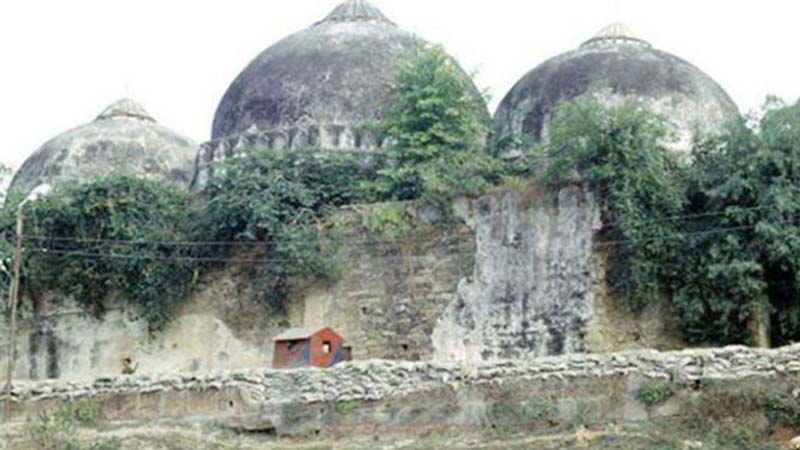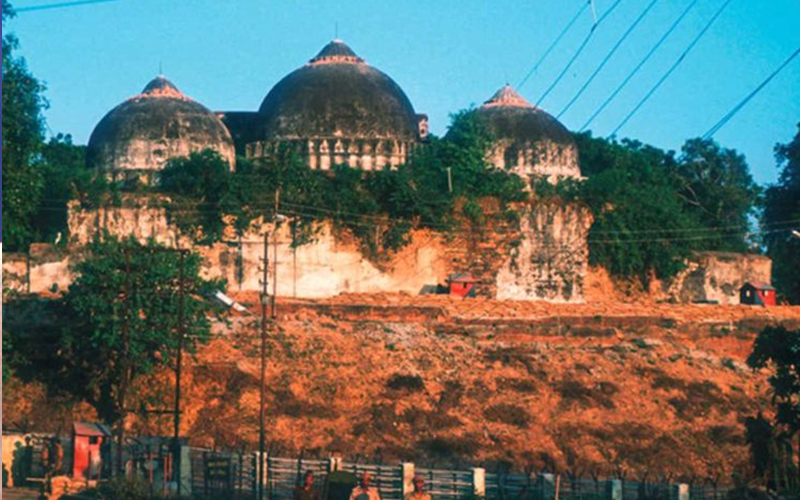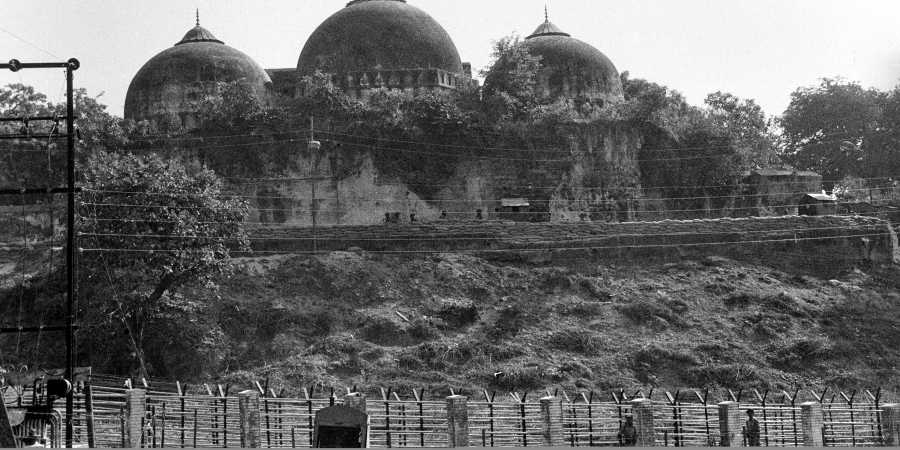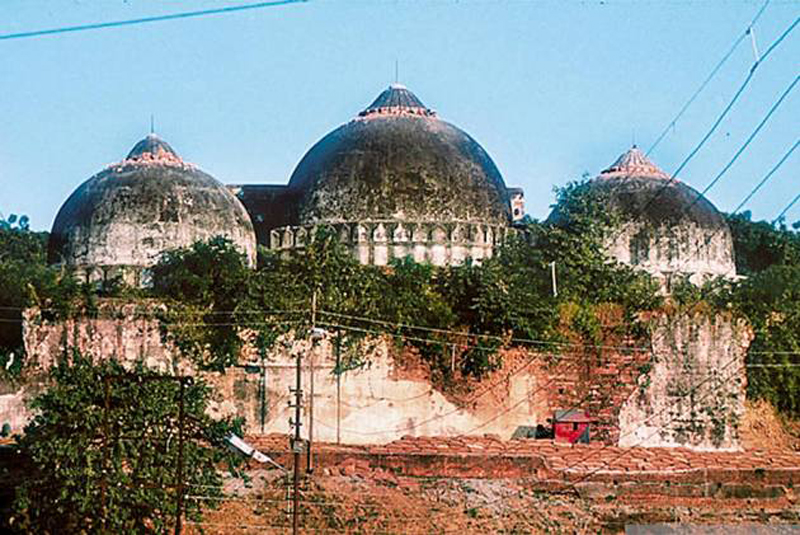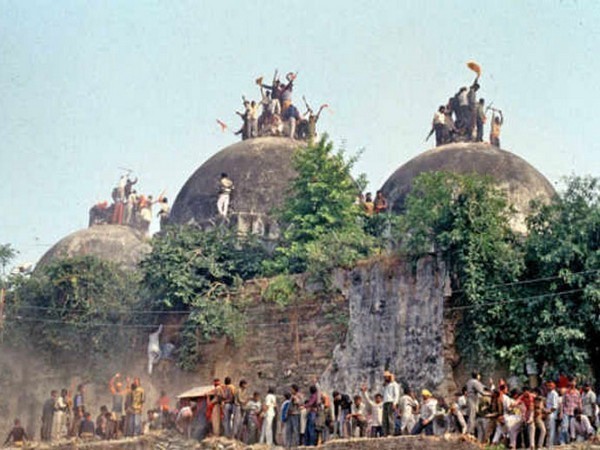Ayodhya: The dispute that stretched over a century and a half is likely to be put to rest finally on Saturday when the Supreme Court announces its verdict on the title suit of the Babri Masjid-Ram Janmabhoomi dispute.
It is an issue that has cast a shadow over India’s socio-political fibre for decades and may even continue to do so for a few more years.
Here are the updates
- Final Verdict: Ram Mandir to be built on disputed site (read more)
- Home Minister Amit Shah on Saturday called a security meeting with National Security Advisor Ajit Doval and Director of the Intelligence Bureau Arvind Kumar at his residence, ahead of the Ayodhya verdict. (read more)
- Internet services will be suspended in Jaipur from 10 a.m. on Saturday till the next order in the wake of the Ayodhya verdict. (read more)
- The Uttar Pradesh-Nepal border has been sealed following a meeting of top officials with Chief Minister Yogi Adityanath around Friday midnight. (read more)
- Security has been tightened across Bengaluru and schools and colleges would remain shut on Saturday in view of the Supreme Court’s verdict on the Ram Janmabhoomi-Babri Masjid title dispute case in Ayodhya, a top police officer said on Friday. (read more)
- Prime Minister Narendra Modi on Friday said that the Supreme Court verdict on Ayodhya will not be a victory or defeat for anyone, and asked everyone to maintain harmony. (read more).
Background of the dispute
The Ayodhya dispute began way back in 1853 when the first incident of communal violence over the Ayodhya issue was recorded.
Nawab Wajid Ali Shah was then the ruler of Awadh. It was the first time that the Hindu community representatives claimed that the mosque was built after the demolition of a Hindu temple.
By 1859, Hindus and Muslims both had started praying at the site. The issue of possession of the site led to more communal clashes and the Britishers built a fence that divided the compound into two parts — the inner court to be used by Muslims and the outer court by Hindus.
Dispute reached court in 1885
Courts got involved for the first time in 1885 as Mahant Raghubir Das filed a plea in Faizabad district court seeking permission to build a canopy of Ram Chabootra on the site of Ram Janmabhoomi. The Faizabad district court rejected the plea.
The first big controversy in the Ayodhya conflict came in 1949 when an idol of Lord Ram was allegedly placed inside the mosque by Hindu activists and a message was spread that Lord Ram had miraculously appeared inside the mosque.
There was a protest from the Muslim side. Both Hindus and Muslims filed a civil suit each in the court. The government had to declare the premises ‘disputed area’ and lock the gates until further notice.
The then Prime Minister Jawaharlal Nehru asked the idol to be removed immediately but the local officer, K.K.K Nair, refused to carry out the order stating that doing so would lead to communal violence.
Cases were filed in the court by the Hindu side seeking permission for the right to worship the idol in the premises. The court held back the removal of the idol and allowed the Hindus to worship. The Nirmohi Akhara became a party to the dispute in 1959 and the Sunni Waqf Board joined in 1961.
After two decades, in the early eighties, the dispute became more political than legal as the Bharatiya Janata Party (BJP) emerged as the torch bearer of Hindutva.
With Vishva Hindu Parishad (VHP), Bajrang Dal and other fringe outfits working overtime to whip up a Hindutva wave, Lord Ram’s temple became the dominant issue of Indian politics, dividing communities on religious lines and blurring regional divides.
Demolition of Babri Masjid
The Hindutva frenzy reached a crescendo on December 6, 1992 when volunteers of fringe groups demolished the mosque. More than 2,000 died in riots that ensued across the country, but the Hindu flag flew high.
For 29 years after the Babri Masjid demolition, the case of the title suit — ownership of land — has been keenly contested in various courts and the issue has been driving the politics of the country in one way or the other.
The formation of the BJP government at the Centre in 2014 and then in Uttar Pradesh in 2017 worked as a catalyst and the slogan “Ram Lalla hum aayenge, Mandir wahin banayenge” seems to be turning into reality now.
Now the apex court is all set to announce the verdict.
Security arrangements
Despite unusually high security arrangements, the verdict is more likely to be received and accepted with restraint.
What cannot be ignored is the fact that some trouble makers may be waiting to deepen the communal divide by provoking and inciting passions and spreading rumours.
This will pose a bigger challenge for the administration, more so in times of social media that takes a few seconds to make news travel.
Moreover, the timing of the verdict is also crucial. Barawafat, a major Muslim festival, will be held on Sunday and Ayodhya will attract lakhs of devotees on Tuesday on the occasion of Kartik Purnima, which will coincide with ‘Prakash Parv’ celebrating the 550th birth anniversary of Guru Nanak.
Crowd management will be a major issue in Ayodhya.
Here is a timeline of the dispute:
1528: Babri Mosque built by Mughal emperor Babur’s commander Mir Baqi
1885: Mahant Raghubir Das files a petition in the Faizabad District Court, seeking permission to build raise a structure next to the mosque. The plea is rejected.
1949: Idol of Lord Ram, Goddess Sita found inside the mosque by unknown persons. Hindus call it divine appearance and start offering prayers.
1950: Two suits filed in a Faizabad court by Gopal Simla Visharad and Paramhansa Ramachandra Das, seeking permission to worship the idols at the mosque
1959: Nirmohi Akhara, a party in the case in the Supreme Court, files suit seeking possession of the site
1981: Uttar Pradesh Sunni Central Waqf Board files suit for possession of the site and removal of idols from the mosque
1986: A local court orders opening of the site and allows Hindus to offer prayers.
1989: The Allahabad High Court orders status quo on the site. Rajiv Gandhi government at the Centre lets Vishwa Hindu Parishad (VHP) perform shilanyaas for Ram Temple.
1990: BJP leader Lal Krishna Advani starts Rath Yatra from Gujrat to gather support for the temple.
1992: Babri Mosque structure demolished by karsewaks
1993: The Central passes an Act to acquire land in and around the disputed site in Ayodhya.
1994: In the Ismail Faruqui case, the Supreme Court rules that the mosque is not integral to Islam
2002: The Allahabad High Court starts hearing to adjudicate the ownership of the disputed site.
2003: The Supreme Court bars any religious activity at the site.
2010: The Allahabad High Court rules trifurcation of the 2.77-acre disputed land between UP Sunni Waqf Board, the Nirmohi Akhara and Ram Lalla Virajman.
2011: The Supreme Court stays the High Court order
2016: BJP leader Subramanian Swamy files plea in the Supreme Court seeking permission to worship and construction of Ram Temple at the disputed site.
2018: The Supreme Court rejects all interim pleas, including that of Swamy, seeking to intervene as parties in the case. Advocate Rajeev Dhavan files plea in the court requesting it to refer the issue of reconsideration of its 1994 judgement to a larger bench which is denied. The court forms a three-judge bench instead to hear the case.
January 2019: Chief Justice Ranjan Gogoi constitutes a five-judge Constitutional Bench to hear the case
March 2019: The Supreme Court appoints a mediation panel headed by Judge (retd) FMI Kallifulla for an out-of-court settlement on March 8.
August 2019: The mediation panel fails to reach an amicable settlement. The Supreme Court begins hearing on August 6.
Oct 2019: After hearing the case on a day-to-day basis for 40 days, the court reserves its order on October 15.

